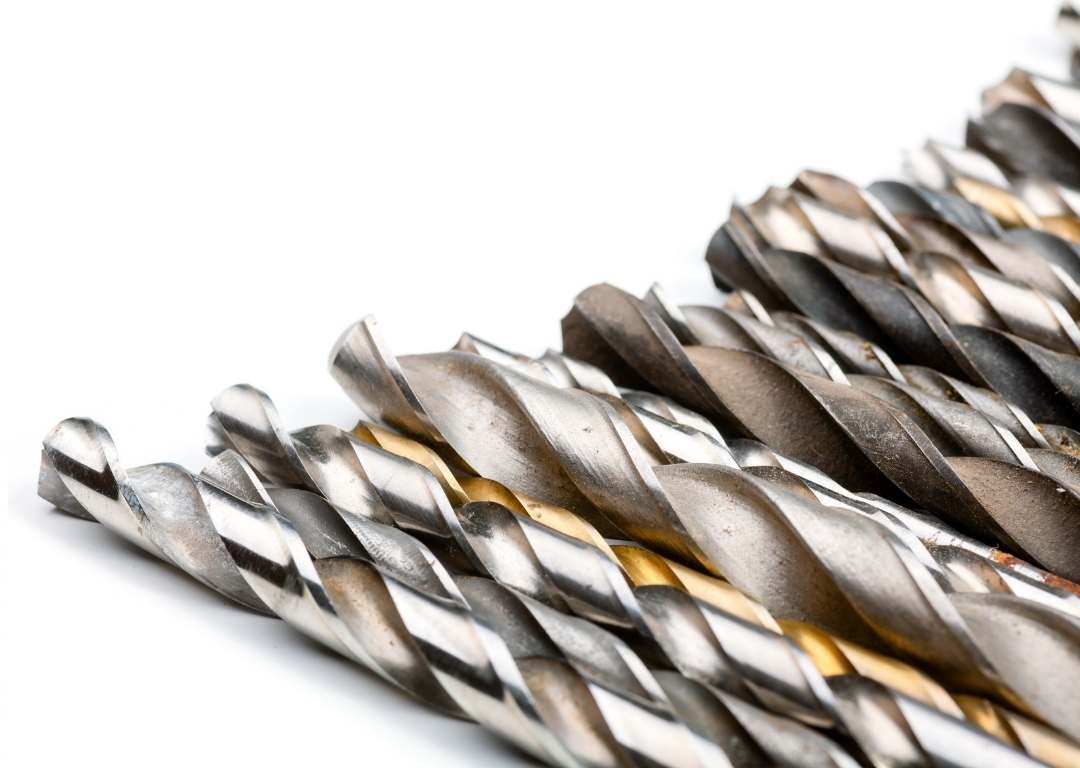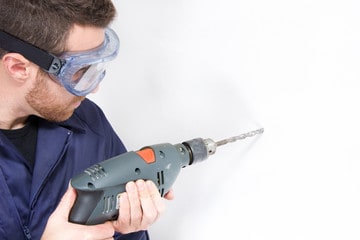Yes, drilling wood can cause fire and smoke inside the drilling hole due to increasing friction between the drill bit and the workpiece. The friction increases due to high RPM, applying too much pressure, using a dull drill bit, chip clogging inside the drilling hole, continuous drilling, and misidentifying the type of wood. You can avoid firing during the drilling by identifying the type of wood correctly, choosing a suitable drill bit with RPM, using a sharpened drill bit, using a right drilling machine, and using a sufficient flute length.
When you drill, you can see smoke rising during the drilling. That is due to hole firing, drill bit overheating, and drill overheating. You can observe this smoke using its smell. Below, I have listed out all the reasons, solutions, and identifications about the wood drilling process.
What are the Signs of Wood Firing While Drilling?
When you see the below signs while you are drilling the workpiece can be a wood fire. Therefore you should be aware of these signs to protect the drill and workpiece always.
- Smoke emission from the drilling hole – If you notice an excessive amount of smoke is rising form the drilling hole while drilling wood, this might indicate a wood fire. Smoke is typically a result of the heat generated by the friction between the drill bit and the wood, which can ignite the wood particles.
- Excessive heating in the drill area – If you notice a significant increase in the heat around the drilling area can be a sign of a wood fire. This happens when the drill bit gets too hot due to excessive speed or pressure, causing the wood to ignite.
- Wood burning smell while drilling – If you start to smell something burning while drilling, it could be a sign of a wood fire. The smell is usually caused by the burning of wood fibers due to the heat generated by the drill.
- Sparks from the drilling hole – If you see sparks flying out while drilling, it is a clear sign of a wood fire. Sparks are generated when the heat from the drill bit ignites the wood particles.
- Darkening or charring of wood drilling area – If the wood around the drilling area starts to darken or char, it could indicate a wood fire . This happens when the heat generated by the drill bit is intense enough to burn the wood surface.
How to Identify the Workpiece, Drill Bit and Drill Smoking?
You can identify the workpiece Smoking, drill bit smoking, and drill smoking by using its smell.
- Workpiece Smoke – Workpiece smoke has a wood-burning smell
- Drill Bit Smoke – Drill bit smoke has a mix of wood-burning and oil-burning smell.
- Drill Smoke – Drill smoke has an oil burning and plastic meting smell. This can be seen directly from the drilling machine.
What are the 7 Reasons for Wood Firing and Smoking When Drilling?
Wood can be smoked and fired while drilling due to these 7 reasons such as using higher RPM, dull drill bit, chips clogging inside the flutes, applying too much pressure to the drill bit, and using an incorrect drill bit. More than that, when you hold the rotating drill bit in the same place, that can be heated, and we can see the smoke.
Below are the detailed reasons for the above reasons.

1. Misidentifying the Type of Wood
When the drill bit is rotating, it produces heat due to the friction between the drill bit and the hole-cutting surface. Due to the friction, heat can be increased easily. As a result of this, the wood surface can burn during the drill bit rotation. This can be seen in dense and tough woods. So you had better know the type of wood before drilling it.
Mainly there are two types of wood. Softwood and hardwood are them. Normally, softwood is less dense with weak fiber. But hardwood is denser with strong fiber. When a hole is drilled inside the wood, there is resistance. We can categorize them as point angle and cutting edge resistance, and outer surface resistance.
Here, wood can be divided into two main types.
- Softwood
- Hardwood
| Properties | Softwood | Hardwood |
| Hardness | Soft than the hardwood | Heavier than the softwood |
| Usage | Produce temporary structures E.g.: For construction purposes (props and trusses) | Manufacture furniture manufacturer high quality and durable structures |
| Colour | Light colour | Dark Color |
| Price | Less expensive than the hardwood | More expensive than the softwood |
| Ease of Drilling | Easy to drill | Hard to drill |
| Fire Resistance | Fire resistance is poor | Fire resistance is better |
| Durability | Less durability | High durability |
Choosing suitable wood for the user’s needs is very important. Because the speed and RPM of the drill bit are determined by the type of wood, therefore, misidentifying the type of wood can cause fires during the drilling.
2. Use High RPM
When the RPM is increased, the heat-generating rate is also increased. As a result of this, workpiece burns can be observed in higher RPMs.
More than that, these factors help to increase the heating during drilling.
- Material (Softwood or hardwood)
- Diameter of the drill bit
- Drill bit type
When the user drills the wood at a high RPM, the wood can be burned and damaged. However, low RPM is also not ideal for wood drill bits. Moreover, using a large drill bit at high RPM cause fire.
3. Using a Dull Drill Bit
When the drill bit is dull, it tends to scratch on the surface rather than cut and remove the material. Hence a lot of heat is generated.
If the drill is not sharpened properly and dull drill bit, then it is a cause of the fire. Moreover, it also leads to reduce work efficiency. Therefore, this is the most common cause of firing the wood while drilling.
4. Wood Flakes/ Chips Get Trapped in the Flutes
When drilling wood, small wood flakes/ chips are formed inside the hole. If the flute length of the drill bit is insufficient, those wood flakes/ chips get trapped in the flute of the drill bit. Those flakes/ chips burn due to friction and heat.
5. Apply too Much Pressure
Pressing the drill bit too hard will cause burning marks. Burning marks occur due to the fire that generates when drilling wood. Therefore, if the user continues to apply too much pressure, the wood will burn. And also sometimes, the drill bit can break due to the higher temperature.
6. Use an Incorrect Drill Bit
As mentioned earlier, the drill bit use will vary depending on the type of wood. Moreover, some drill bits are not suitable for wood, such as Cobalt drill bits. Therefore, using an incorrect drill bit also led to firing the wood while drilling.
7. Drill the Same Place/ Hole Continuously
Accordingly, when drilling wood, repeatedly drilling the same place/ hole will increase the heat and cause it to burn. Moreover, the drill bit can be dull if use the drill bit without breaks. You should cool the drill bit during drilling.
How Can You Drill Wood Without Firing and Smoking?
You can drill wood without firing and smoking by using below helpful facts. First, you should identify the type of wood correctly. Then, find a correct RPM for the wood type. Next, you can choose a suitable drill bit. If the drill bit is not sharpened, you should sharpen it properly. Then you should use a proper drilling machine finally drill the hole until the sufficient flute length.
1. Identifying the Type of Wood Correctly.
As mentioned earlier, there are two types of wood: softwood and hardwood. The wood can be drilled without burning by correctly identifying the respective wood by the characteristics of each type of wood. It is also very important to choose the type of wood that is relevant to one’s needs.
2. Choose a Suitable RPM
As mentioned earlier, RPM for drilling wood depends on several factors. Accordingly, the user must identify the appropriate RPM for the wood drill.
Simply, hardwood requires low RPM than softwood. Moreover, it requires low RPM if the drill bit is larger. The RPM is also determined by the type of the drill bit. Accordingly, different types of drill bits with the same diameter have different RPM values.

3. Choose a Suitable Drill Bit

The drill bit used will vary depending on the wood. Accordingly, the pressure and speed to be applied are also determined. Therefore, choosing the right drill bit for the job is very important. Moreover, using high-quality drill bits is also really important.
4. Sharpen the Drill Bit
You should sharpen the drill bit because that leads to avoiding wood burning and increases efficiency.
5. Choose a Suitable Drill
Choosing a suitable drill can avoid wood burning. For example, when you select an electric drill, you should choose a sufficiently powerful drill machine that will not overheat with the load.
6. Sufficient Flute Length
Sufficient flute length is important to prevent the chips from clogging inside the drilling hole. If the drill bit penetrates below the flute limits, inside chips can be clogged easily. Hence, you should choose a sufficient flute length and flute density when you are choosing a drill bit.

